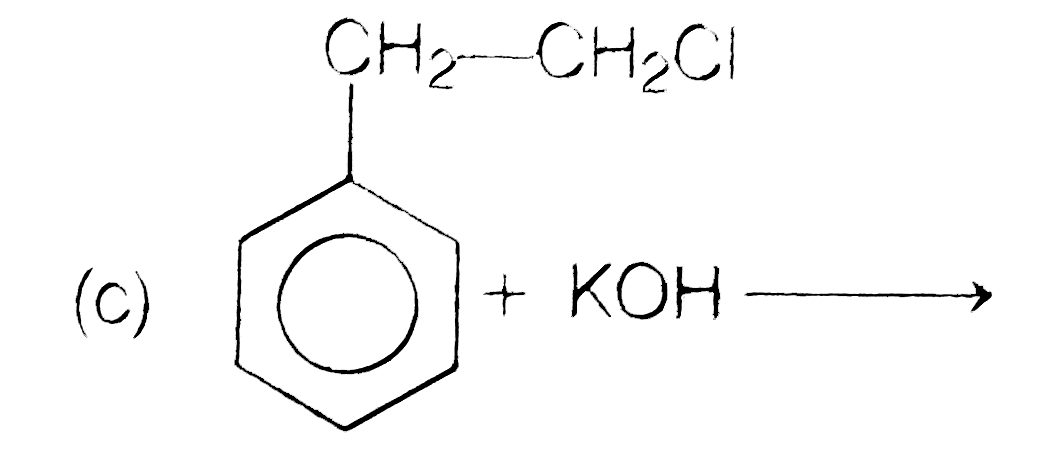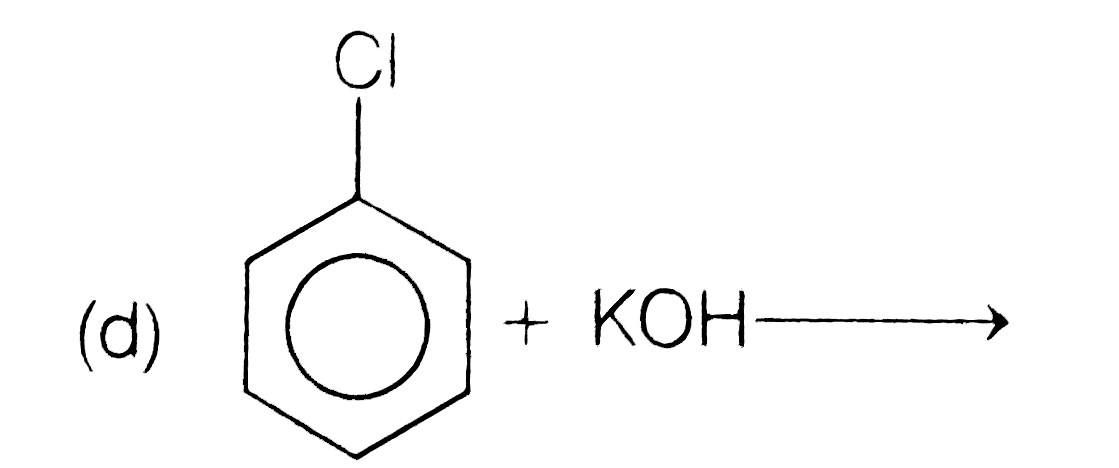Assertion: SN1 reaction is basically a solvolysis reaction.
Reason: Polar protic solvents help the substrate to ionize and by the way get involved in SN1 reaction.
If both assertionn and reason are true, and reason is the true explanation of the assertion.
If both assertion and reason are true, but reason is not the true explanation of the assertion.
If assertion is true, but reason is false.
If both assertion and Reason are false.
The correct Answer is:A
To solve the assertion and reason question, we will analyze both statements step by step.
Step 1: Understanding the Assertion
The assertion states that an SN1 reaction is basically a solvolysis reaction.
- Explanation: In an SN1 reaction, the first step involves the ionization of the substrate to form a carbocation. This process is facilitated by the solvent, which is typically a polar protic solvent. The term "solvolysis" refers to a reaction where the solvent plays a key role in breaking the bond of the substrate, leading to the formation of ions.
Step 2: Understanding the Reason
The reason states that polar protic solvents help the substrate to ionize and thus get involved in the SN1 reaction.
- Explanation: Polar protic solvents, such as water or alcohols, stabilize the carbocation formed during the ionization step of the SN1 mechanism. They can solvate the ions and help in the dissociation of the substrate, which is crucial for the SN1 reaction to proceed. This stabilization is essential for the formation of the carbocation intermediate.
Step 3: Linking Assertion and Reason
Now we need to determine if the reason correctly explains the assertion.
- Analysis: The assertion is correct because SN1 reactions are indeed solvolysis reactions. The reason is also correct, as polar protic solvents do facilitate the ionization of the substrate. Moreover, the reason provides a valid explanation for the assertion, as it describes the role of polar protic solvents in the SN1 mechanism.
Conclusion
Both the assertion and reason are true, and the reason correctly explains the assertion. Therefore, the correct conclusion is that both statements are true, and the reason is the correct explanation of the assertion.
Final Answer
Both the assertion and the reason are true, and the reason is the correct explanation of the assertion.
---
The assertion states that an SN1 reaction is basically a solvolysis reaction.
The reason states that polar protic solvents help the substrate to ionize and thus get involved in the SN1 reaction.
Now we need to determine if the reason correctly explains the assertion.
Both the assertion and reason are true, and the reason correctly explains the assertion. Therefore, the correct conclusion is that both statements are true, and the reason is the correct explanation of the assertion.
Both the assertion and the reason are true, and the reason is the correct explanation of the assertion.
Topper's Solved these Questions
- HALOALKANES AND HALOARENESBOOK - PRADEEPCHAPTER - HALOALKANES AND HALOARENESEXERCISE - IMPORTANT QUESTIONS FOR BOARD EXAMINATION
22 Videos
- HALOALKANES AND HALOARENESBOOK - PRADEEPCHAPTER - HALOALKANES AND HALOARENESEXERCISE - Competition Focus (JEE (MAIN AND ADVANCED)/MEDICAL ENTRANCE SPECIAL (VII - ASSERTION-REASON TYPE QUESTIONS))
8 Videos
- GENERAL PRINCIPLES AND PROCESSES OF ISOLATION OF ELEMENTS BOOK - PRADEEPCHAPTER - GENERAL PRINCIPLES AND PROCESSES OF ISOLATION OF ELEMENTS EXERCISE - Curiosity Questions
2 Videos
- ORGANIC COMPOUNDS CONTAINING NITROGENBOOK - PRADEEPCHAPTER - ORGANIC COMPOUNDS CONTAINING NITROGENEXERCISE - IMPORTANT QUESTIONS FOR BOARD EXAMINATION
27 Videos
Similar Questions
Knowledge Check
SN1 reaction is feasible in
A B
B C
C D
D
SN1 reaction is faster in
ACH3CH2ClB CCH3−CH3∣C∣CH3−ClDCH3−CH∣∣CH2∣CH3−Cl
CCH3−CH3∣C∣CH3−ClDCH3−CH∣∣CH2∣CH3−ClSN2 reaction are
Astereoselective as well as atereopecificBstereoselective but not stereospecificCstereospecific but not stereoselectiveDNeither stereospecific nor stereoselective
S1N reaction is favoured by
View SolutionIn SN2 reaction________.
View SolutionThe rat eof SN2 reaction is maximum when the solvent is
View SolutionIn SN1 reaction an optically active substrates mainly gives
View SolutionThe order of reactivity of halogens in substitution reaction in polar protic solvent is:
View Solution

